Contents Bulk purchase Gryphon House books are available for special premiums and sales promotions as well as for fund-raising use. Special editions or book excerpts also can be created to specification. For details, contact the Director of Marketing at Gryphon House. Disclaimer Gryphon House, Inc. and the author cannot be held responsible for damage, mishap, or injury incurred during the use of or because of activities in this book. Appropriate and reasonable caution and adult supervision of children involved in activities and corresponding to the age and capability of each child involved, is recommended at all times.
Do not leave children unattended at any time. Observe safety and caution at all times. Every effort has been made to locate copyright and permission information. 2007 Sharon MacDonald Printed in the United States of America. Published by Gryphon House, Inc. PO Box 10, Lewisville, NC 27023 800.638.0928 (toll free); 877.638.7576 (fax) Visit us on the web at www.gryphonhouse.com All rights reserved.
No part of this publication may be reproduced, stored in a retrieval system or transmitted in any form or by any means, electronic, mechanical, photocopying, recording or otherwise, without the prior written permission of the publisher. Illustrations by Deborah C. Johnson Reprinted July 2013 Library of Congress Cataloging-in-Publication Data MacDonald, Sharon, 1942 Math in minutes / Sharon MacDonald ; illustrations by Deborah C. Johnson. p. cm.
Includes index. ISBN 978-0-87659-057-7 1. Mathematics--Study and teaching (Primary)--Activity programs. I. Title. QA135.6.M33 2007 372.7--dc22 2007004511 CHAPTER 1: Teach Math? Me? I never liked math, and that is why I wanted to write this book.
I was an active child and math was hard for me. Frankly, it often made me feel stupid, overwhelmed, and frustrated. Throughout years of teaching, I learned many teachers share my feelings. When I first became an early childhood teacher, I worried that my principal would find out about my math skills and conclude that I wasnt able to teach math to the children. I was afraid that I might even lose my job! Then Cammi came into my class, and she changed my life and my outlook about math. Cammi loved rocks.
Every day, she brought in a handful of them to share with the class. We measured, sorted, weighed, counted, and graphed her rocks during morning Group Time. It was a smash hit. As time passed, the other childrens interest in the rocks waned, but Cammi continued to bring her rocks in, day after day, one handful at a time. Eventually, one day, I decided to let Cammi do independent rock projects while the rest of the children were in the usual morning Group Time activities. Cammi would work with her rocks in the Math Center, I thought, and report her findings to the entire group later.
In the Math Center, Cammi had several options for activities to do with her rocks. There was a blank Venn diagram, a blank graph, number lines, several sorting trays, and a roll of adding machine tape hung from a cup hook (for measuring the lengths of things). While the rest of the class was in Group Time, I kept an eye on Cammi. She worked in the Math Center all morning. When Group Time ended for the rest of the children and they transitioned to different centers, Cammi yelled, If anyone needs a number line they can use mine. I went over to see what she had done.
Evidently, Cammi could not find the basket of number lines, so she made one of her own. Cammi wrote ascending numbers on a strip of adding machine tape, and placed a rock on each different number as a way to count them. Cammi learned that 7 was the total of the rocks, and she counted them rationally. Wow! I was impressed. Teaching Math Using rocks as a tool to teach math worked for Cammi because she was interested in rocks. Cammi learned new math skills and met important academic goals because she liked the materials.
Establishing such interest engages childrens natural curiosity, which can lead to learning in the way it did for Cammi. Cammi taught me that for young children, math is not desk work. For math to make sense to young children, it needs to relate to everyday events happening in their lives. Most of our days are full of mathematical problems children can solve. What Is Math? What is math anyway? Math is about relationshipsthe relationships between numbers, events, objects, systems, and cycles; it is, of course, about calculating; and it is also about figuring things out in an organized way. Cammi learned several things during this activity: that a number line is a tool; how to perform one-to-one correspondence and rational counting; that numbers ascend on the number line, from left to right; and how to write the numerals 17.
Cammi also met National Council of Teachers of Mathematics (NCTM) curriculum goals for early childhood students by learning to: value mathematics; become confident in her math ability; become a mathematical problem-solver; communicate mathematically using numbers, symbols, and words; and reason mathematically. Cammi met each of these curriculum goals on her own by playing and exploring with her rocks. Below is an example of how to pose simple, mathematical problems for children as well as provide them with an interactive way to use mathematical tools to solve the problems. It takes just a few minutes, and it is a good illustration of what children can do with a little teacher direction. They can solve the problem! 1. 2. 2.
How will we find the answer? Maybe what we need to do is put the two people who are going to share an apple together. What do you think? 3. How will we execute the plan? Should we count the apples that are going to be shared? 4. What is the result? How many apples? Eleven? This example poses an everyday mathematical problem and includes the intermediate steps that allow the children to reach the solution. It may take more time and thought than a simple addition problem, but it is worth the investment of both. The intermediate steps are easy to leave out, because adults do them in their heads.
But verbalizing these steps makes it easier for children to figure out the answer by themselves. The above example uses steps 1 through 4, not 1 then 4.  What Is ? Rational counting means attaching numbers in order to a series of objects in a group, just as Cammi was doing with the rocks. Rote counting, on the other hand, is when a child recites the order of numbers from memory: One, two, three, four, five, six, seven, eight, nine, 10. Doodling Although doodling is not part of math, it helps people relax and find solutions to problems. The brain likes to doodle because when you use your thumb and fingers to manipulate a pencil, it requires about one third of the brains processing power, which really lights up the brains circuitry.
What Is ? Rational counting means attaching numbers in order to a series of objects in a group, just as Cammi was doing with the rocks. Rote counting, on the other hand, is when a child recites the order of numbers from memory: One, two, three, four, five, six, seven, eight, nine, 10. Doodling Although doodling is not part of math, it helps people relax and find solutions to problems. The brain likes to doodle because when you use your thumb and fingers to manipulate a pencil, it requires about one third of the brains processing power, which really lights up the brains circuitry.
The next time you need to solve a problem, pick up a pencilit is the fastest way to link your creativity to your mental crunching power! Literacy and No Child Left Behind (NCLB) With the NCLB emphasis on reading, writing, speaking, listening, and testing, I knew I needed quick and easy-to-use math lessons to cover the math standards. I wanted the children to be excited about math, too, and develop their skills. I decided that the only way for me to approach it was to build math standards into the small events and activities that took place in the classroom during the day. Here is what I did: 1. I posted a list of the NCTM math standards in (see appendix pages 186 and 187) the Math Center. 2. 2.



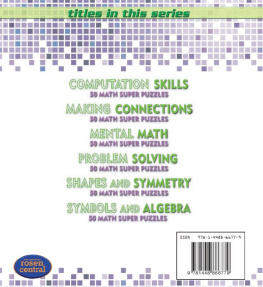
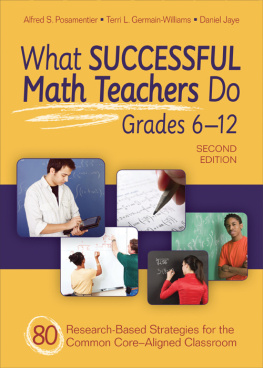
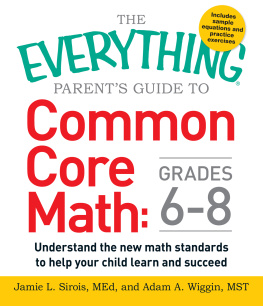
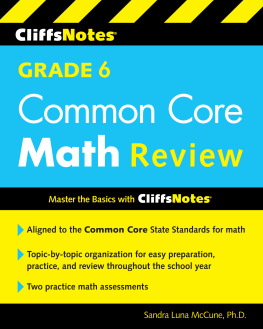
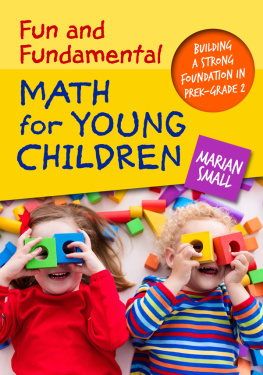
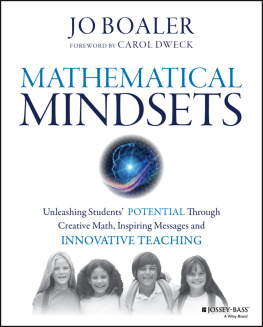
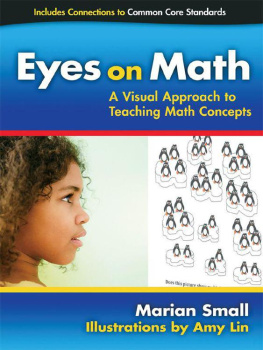
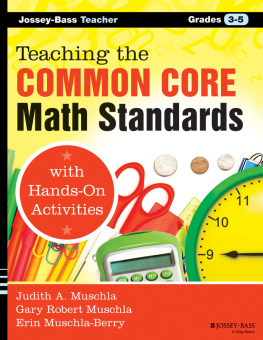

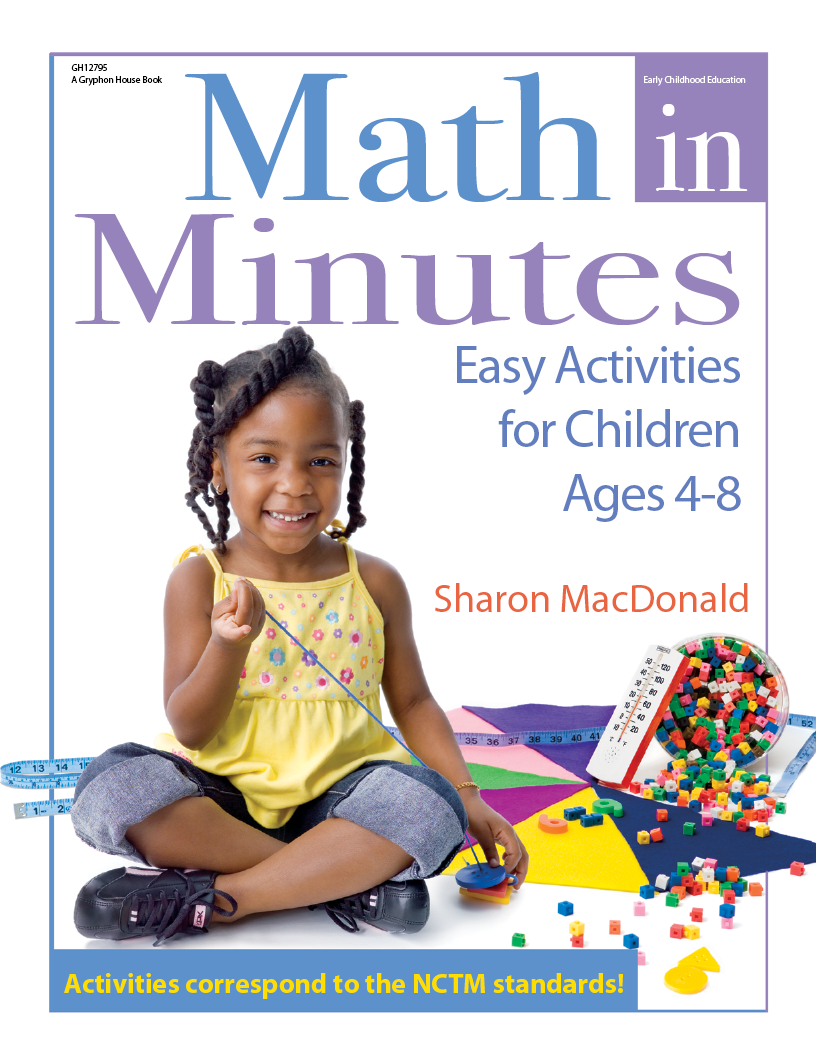
 What Is ? Rational counting means attaching numbers in order to a series of objects in a group, just as Cammi was doing with the rocks. Rote counting, on the other hand, is when a child recites the order of numbers from memory: One, two, three, four, five, six, seven, eight, nine, 10. Doodling Although doodling is not part of math, it helps people relax and find solutions to problems. The brain likes to doodle because when you use your thumb and fingers to manipulate a pencil, it requires about one third of the brains processing power, which really lights up the brains circuitry.
What Is ? Rational counting means attaching numbers in order to a series of objects in a group, just as Cammi was doing with the rocks. Rote counting, on the other hand, is when a child recites the order of numbers from memory: One, two, three, four, five, six, seven, eight, nine, 10. Doodling Although doodling is not part of math, it helps people relax and find solutions to problems. The brain likes to doodle because when you use your thumb and fingers to manipulate a pencil, it requires about one third of the brains processing power, which really lights up the brains circuitry.